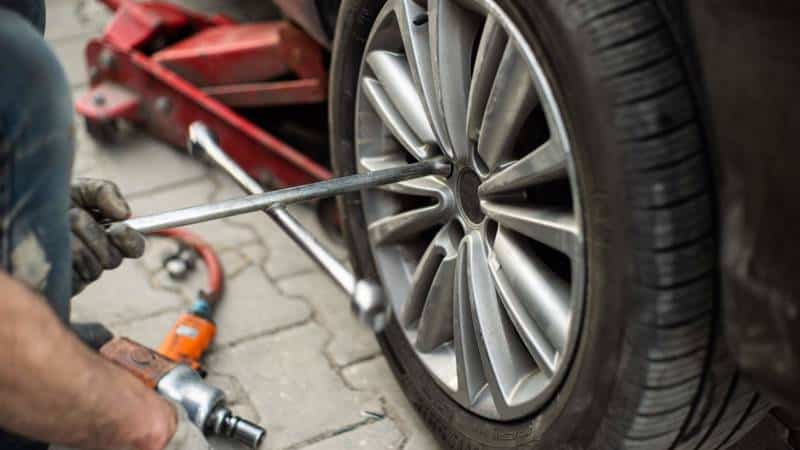
How does the floor jack work whenever your car is lifted?
Everyone wants to understand its science, be it a garage or car owner. Fortunately, that’s what this article is about.
Below, we will discuss what channels your jack to reach its highest height and the tips you should follow to keep yourself and your car safe while operating the jack.
Let’s not wait any longer and start this guide.
Components of Floor Jack
Before you know in-depth about the lifting technique of the floor jack, it’s necessary to know about its components.
Saddle
The saddle is a round pad having grooves on it. It is built-in on the lift arm of the floor jack. Alone this part of your floor jack comes in contact with your car and lifts it high.
Handle
The handle is a long part of the jack that attaches to your jack from one end and has a knuckle holder on the other end. Most probably, it is 40 to 50 inches tall so that you can have an easy grip on it.
Piston
Near the handle, the attachment is a piston located in a floor jack. Some floor jacks have one, while others come with two-piston pumps. The number of pistons determines how quickly your floor jack will lift.
Cylinder
Where the piston is exposed and can be seen, the cylinder is a hidden yet significant part of a floor jack. A cylinder follows a piston and is the pathway for fluid traveling through pressure.
Wheels
Wheels don’t have a role when the floor jack lifts. However, they are integrated to help you move the unit here and there in your garage since some of the units are heavy enough.
How Does Floor Jack Work to Lift Your Car?
A floor jack is a hydraulic device that operates on Pascal’s principle of pressure. When you hold the large handle of the floor jack and push it down, it exerts pressure on the piston attached.
This pressure is directly imposed on the cylinder located on the floor jack and connected by piping. And this fluid pressure travels to the lifting arm of your floor jack. The lifting arm ascends to the highest height, lifting your car.
Tips to Use a Floor Jack Safely
The process of lifting the jack is straightforward. Still, it’s necessary to keep the tips in mind to complete the process efficiently and keep yourself safe and sound.
- Take your car to a leveled or hard surface. This way, it will stay firm on the place it is on and minimize the chances of an accident.
- Put wood blocks against the wheels of the opposite side you are about to lift. Your car will not displace from where it is that way.
- Use your floor jack for the weight it is rated for. Otherwise, it may fail and result in a gradual drop from the height it has achieved.
- Never put all the weight on your floor jack – especially when you want to work under your car. Use jack stands for support.
- If you are a novice at using a floor jack, read the manual of your floor jack carefully. It will tell you where to position your floor jack so that the saddle can easily come in contact with your car.
- Before directly operating the floor jack on your car, check if it’s working properly. Pump it upward and see if the saddle is stable enough.
- There must not be debris around the floor jack. So, either clear out the area around or perform the jacking in a clean space.
Conclusion
By now, you’d have a sound idea of how floor jack work.
Floor jacks are built to work on Pascal’s law which means that when pressure is exerted on a fluid, it moves in all directions equally. So, when you pump the long handle, the pressure is transmitted to the piston, cylinder, and finally to the lift arm.
Besides working, you should also keep in mind the tips to handle your floor jack efficiently. After all, nothing is more important than your safety.
You May Also Like
How Much Should You Spend on a Floor Jack? An Expert’s Guide